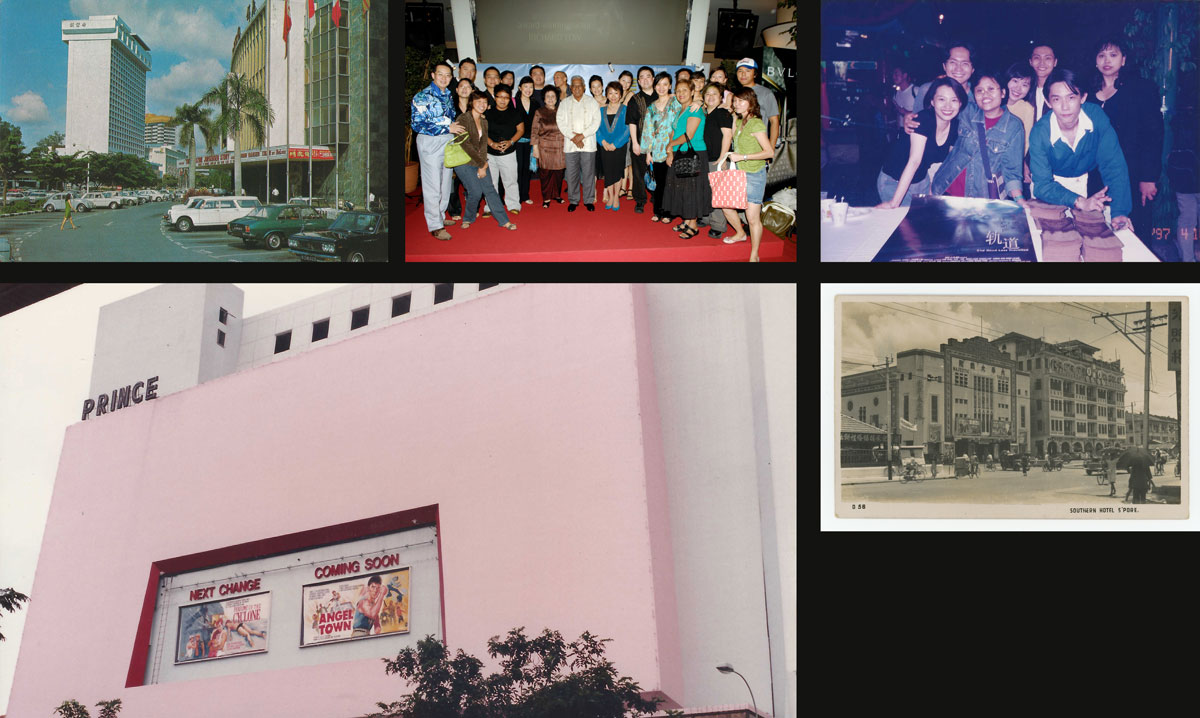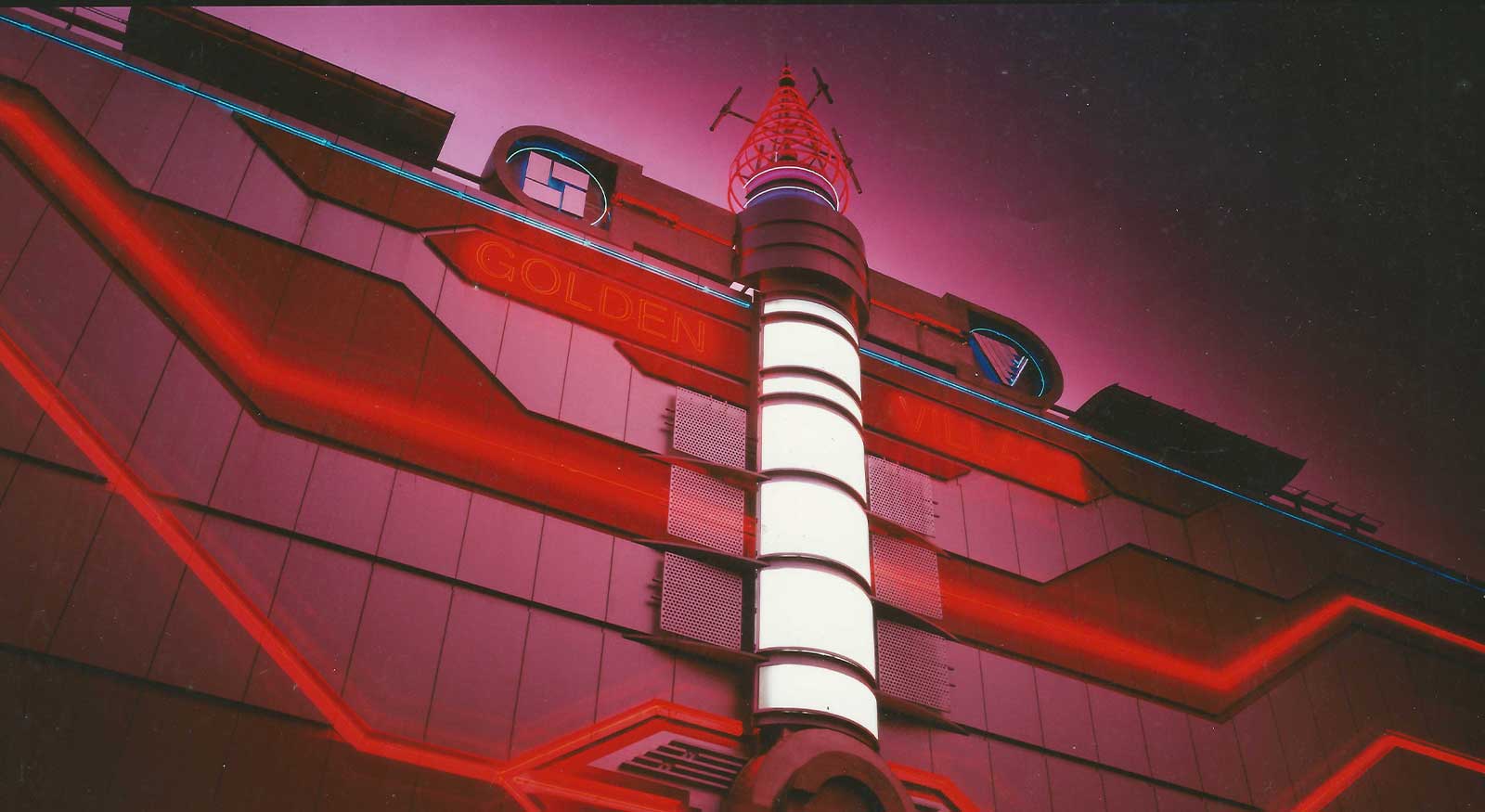Short videos before each screening
This project is supported by funding from Nanyang Technological University Start-Up Grant (03INS001316C420) and the Singapore International Film Festival.
Domain seeks to expand our collective sphere of knowledge, deepening our engagement with cinema through thoughtful curatorial interventions.
This edition introduces Dwellings, a series of short videos that revisit bygone or forgotten screening spaces in Singapore using archival materials. Catch these snippets from the past before each festival screening, as we gather to reencounter and reflect on the places where cinemagoers once gathered, if only for a little while.
Dwellings
concept and text Yeo Min Hui
directing and editing Tang Kang Sheng
camera Don Aravind
archival materials Wong Han Min
project manager Ryan Pagdanganan
special thanks Colin Goh, Lim Suat Yen, Djinn Ong, Woo Yen Yen
“Dwelling” is a place where someone or something lives; to “dwell on” means to linger on something, or to be stuck in the moment.
Across Singapore’s film history, different individuals, communities and films found their dwellings in screening spaces, nurturing a sense of belonging, togetherness, as well as the growth of our film and urban culture.
Yet, memories and records of these past existences – travelling cinemas, picture palaces, early cineplexes, etc. – are often lost as quickly as the architectures themselves.
Although this is by now a tired cliché, but it bears constant reiteration that one cannot move forward sustainably without engaging meaningfully with our pasts. Historical knowledge is integral to our individual and collective sense of self.
Swept along by the unceasing push of developmentalism, it is often necessary, even vital, to dwell on our past a little longer.
Dwellings is founded on this core belief. This project commemorates the 35th anniversary of the Singapore International Film Festival by launching a series of short videos that showcases Singapore’s past screening spaces.
Returning to the sites and re-presenting archival materials, Dwellings honours these (mostly) bygone spaces which, like the Festival, provided invaluable platforms for local and international films. It celebrates screening spaces as nodes where films, filmmakers and filmgoers encountered one another, and communities were formed on this island because of cinema. It also seeks to introduce some film history to our existing sense of place.
Dwellings will be screened at various festival venues this year. We invite you to stay with us; to linger together, just for a little while.
Travelling Cinemas

The technology of cinema has its roots in the Kinetoscope (a single-user peep-hole box that played 35mm films frame by frame in loops) and the Cinématographe (a three-in-one device that could take motion pictures, develop/print film and project it onto a big screen). Almost as soon as they were invented in America and Europe in the late 1890s, the Kinetoscope, the Cinématographe and its subsequent variations found its way to Singapore through the travelling entertainment circuit.
Dr. Harley, an entertainer from Britain who was on tour in Asia, was the first to bring the Kinetoscope to Singapore in 1896. Then, in 1897, showman Arthur Sullivan and the travelling entertainment troupe led by Miss Elsie Adair brought film projection technologies to Singapore for the first time as part of their entertainment programme.
The earliest films ever screened in Singapore were often representations of British monarchy and imperialism, for example scenes from Queen Victoria’s Diamond Jubilee procession. These took place in makeshift tents or performance venues, such as the Adelphi Hall (today’s The Adelphi), Town Hall (today’s Victoria Theatre) and tents at the foot of Fort Canning Hill.
Picture Palaces

The earliest purpose-built cinemas in Singapore were “picture palaces”. These are elaborately designed structures, often of colossal dimensions, with one large screening hall i.e. only one film would have been screening, albeit to a very large crowd, at the cinema during each timeslot. With the construction of purpose-built cinemas, film screening became less itinerant. Films and film enthusiasts were now housed together within specially designed complexes.
Singapore’s first permanent-site picture palace is the Paris Cinematograph. Built in 1904 at 320 Victoria Street, it was formerly the site of a Malay opera hall. As a form of entertainment, film screening swiftly gained popularity in Singapore, resulting in the construction of more picture palaces. Among the oldest and longest-running picture palaces in Singapore’s history are the Alhambra (1907-1969; renamed New Alhambra in 1938), the Theatre Royal (1908-1977; renamed Royal Theatre in 1935) and the Palladium (1914-1969; renamed Pavilion Theatre in 1925).
At the beginning, cinemas screened silent short films, mostly newsreels or travelogues from Europe and America. When talkies (synchronised sound films) were invented in the late 1920s, operators of these picture palaces promptly revamped their cinemas to equip them with the latest (especially sound) film technologies, and to make them more comfortable for their cinemagoers. Air-conditioning and comfortable theatre seats, for example, became key selling points by the 1940s.
Cineplexes

The cineplex remains the most dominant mode of film exhibition in Singapore today. Unlike cinemas of the past, cineplexes have more than one screening hall, which means that when audiences arrive at the venue, they can choose from a selection of films to watch at any given timeslot. The first cineplex in Singapore was born when the originally single-screen Prince Cinema and Jade Cinema were revamped into duo-hall cinemas (Prince 1 and Prince 2; Jade 1 and Jade 2) in 1988.
It was, however, the opening of Yishun 10 on 27 May 1992 that truly kickstarted the cineplex trend in Singapore, swiftly replacing the earlier trend of single-screen cinemas. With ten screening halls, the three-storey Yishun 10 was the first mega-cineplex in Singapore. It was also Asia’s largest cineplex at that time.
The futuristic-looking Yishun 10 was also the first to implement computerised and phone booking system.
Yishun 10 was a product of its times. By the 1990s, Singapore had among the world’s highest yearly per capita cinema admissions; there was a cinema-building boom; and new towns were developing outside of the city centre. All these fuelled Singapore’s cineplex trend, spearheaded by Yishun 10.
Yishun 10 was designed by architect Geoffrey T. Malone, who was a founder of the Singapore International Film Festival.
Cinemas and the Festival

1. Lido Theatre.
2. Singapore Dreaming premiered at Lido Theatre during Singapore International Film Festival in 2006.
3. The Road Less Travelled premiered at Majestic Theatre during Singapore International Film Festival in 1997.
4. Majestic Theatre.
5. Perth premiered at Prince Theatre during Singapore International Film Festival in 2004.
Courtesy of Colin Goh, Woo Yen Yen, Lim Suat Yen, Wong Han Min and Singapore International Film Festival.
The Singapore International Film Festival, founded in 1987, is an important mode of film exhibition in Singapore. Since its inauguration, the Festival has enabled audiences in Singapore to catch over a hundred local and international films annually.
This video features cinemas where early local feature films had their world premieres at the Festival, highlighting the Festival’s crucial role in providing much-needed platforms for budding local filmmakers, especially at a time when Singapore’s contemporary filmmaking scene was in its early, fledging stage.
The cinemas featured in this video housed the Festival during its early years. They were also iconic during their time, many of which have since been demolished (Prince Theatre, 1976-2008), replaced (Lido Theatre, 1959-present), or completely repurposed (Majestic Theatre, 1929-1988).
